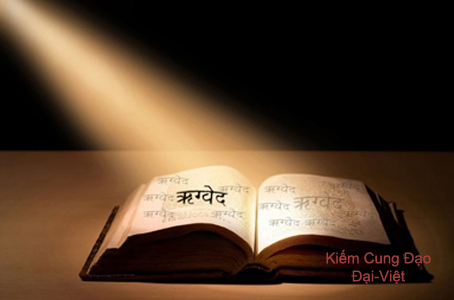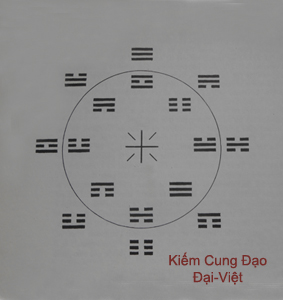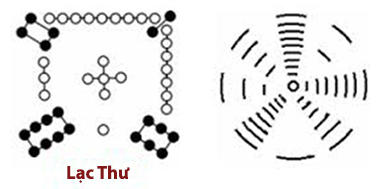THE WAY OF SWORD AND BOW
FROM ĐẠI-VIỆT
Présentation
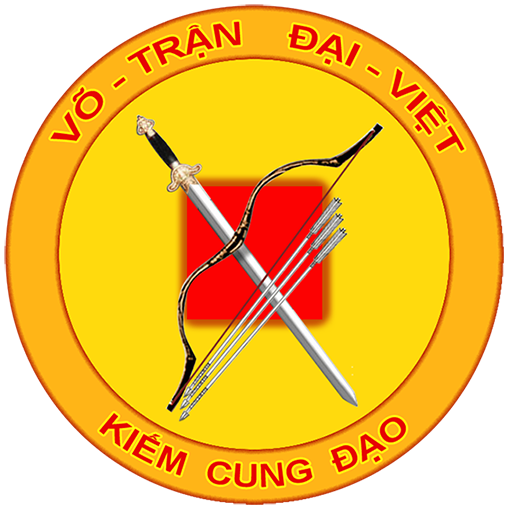
Since the ancient times Việt people have had this expression « Trả Nợ Kiếm Cung - To Pay the Debt of Sword and Bow » for expressing the duty of a man towards the country in war period. In an evidently manner, the Sword and the Bow had represented the military career and had served as Symbols of Medieval Batllefieds Martial Arts.
It's precisely for this reason that our Academy of Đại-Việt Medieval Martial Arts use these two arms which are the Sword - Kiếm and the Bow - Cung for naming our new WEBSite under theappellation of « The Way of Sword and Bow - Kiếm Cung Đạo » (http://www.kiemcungdao.org) very shortly on line.
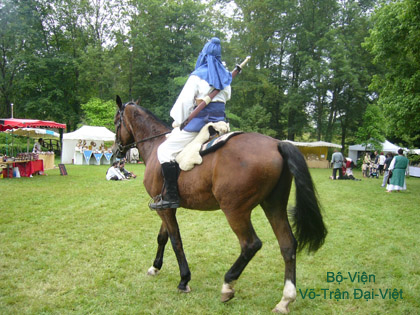
Thân đã lỡ đa mang đời vó ngựa,
Kiếm cung còn mơ một khúc quân ca.
(Thơ : Dã-Tràng Biển Đông)
As we carry in our person the life made of rides,
Through out the Sword and Bow, we still dream an Epic of feat of arms.
(Poem : Dã-Tràng Biển Đông)
Our goal is to present to you in general the Đại-Việt Medieval Martial Arts, and in particular the Art of Sword and the Art of Archery from Đại-Việt, from the Military Examination of officiers through out Dynasties of LÝ, TRẦN, and of Posterior-LÊ.
The Đại-Việt Kingdom, owning a civilisation of more than Four Thousand Years, is situated in a geopolitical latitude located between two Civilisations, from India andt from China, which have equally all a Civilisation of more than Four Thousand Years. That why,lthe Đại-Việt Medieval Arts Martial could benefit from cultural influences of these two indian nation and chinese nation on top of the specific martial researches from Ancestors of Việt people.
In concrete terms, that are the Art of Sword Wielding and the Art of Bow Shooting from Đại-việt which could inherit cultural influences of India from Rig Veda (above all from Mundaka Upanishad मुण्डक उपनिषद् belonging to Atharva Veda in the Rig Veda Sûtra) and from Bouddhism as well as cultural influences of China from Taoism through out the Philosophical Studies of Lie-Zi (Liệt Ngữ Khấu 列 禦 寇 - Xung Hư Chân-Kinh 冲 虚 真 经), and from Confuceanism through out the Philosophical Studies of Kong-Fu-Zi on the Yi Jing 易 經 whom the essential foundamental Basis were the Picture from the River and the Treaty from the Lạc River of Lạc-Việt Civilization.
Kinh Lê-Câu Vệ-Đà (Photo Credit : wheresmypandit.com)
|
Kinh Dịch (Photo Credit : Victoria and Albert Museum)
|
Picture from the River (Photo Credit : nhantu.net )
|
Treaty from the Lạc River (Photo Credit : nhantu.net)
|
According to the Philosophy from the Far-East,the Art of Sword Wielding is inherent in the Vital-Breath KHÍ and the 'Art of Bow Shooting is inherent in the Spritual-Enenergy THẦN. This fact has raised the two arms that are the Sword and the Bow into the more sublime and the more sacred rank in the millenium Cultures of Asia, and their wielding was handed down to the posterity as a Spirituel Message from all a sky of poetry whom the antique Rig Veda Sûtra is a infinitely precious representation.
Kiếm Cung Đạo Cổ-Nhân
The Way of Sword and Bow from the Ancients
The paces of Ancients engraved on their path known :
They're history's pages lived through by our country,
That's all a spiritual message handed down,
The Way of Sword and Bow from a sky of poetry.
Trịnh Quang Thắng.
VÕ-TRẬN-ĐẠI-VIỆT TRỊNH Quang Thắng |
Bibliography
-
Monde Ancien, Civilisation Orientale, Poème Lyrique, Inde - Rig Veda, Traduction de Alexandre Langlois, Imprimerie Paul Dupont, Rue Jean-Jacques Rousseau, Paris, 1870.
-
Œuvre de Lie-Tzeu, dans Les Pères du Système Taoïste, Léon Wieger, Imprimerie de Hien-Hien, 1913, réédition Les Humanités d’Extrême-Orient, Cathasia, Les Belles Lettres, Paris, 1950.
-
Lie Zi , Le Vrai Classique de la Vertu parfaite du Vide harmonieux, textes traduits et annotés par Fang Sheng, Librairie You-Feng, 2011, ISBN 978-2-84279-493-4, éd. bilingue chinois-français
-
Traité du Vide Parfait, traduit du Chinois par Jean-Jacques Lafitte, Albin Michel, Paris, 1997, ISBN 2226094261 (réédition août 2009, collection Spiritualités vivantes ISBN 978-2-226-09426-1).
-
Le Vrai Classique du Vide Parfait, Benedykt Grynpas, Collection Connaissance de l'Orient, format poche (No 36), série chinoise (1961), Gallimard (plusieurs rééditions dont Gallimard, Folio n° 548, 2011, ISBN 978-2-07-044135-8)
-
Lie Zi, Les Fables de Maître Lie, traduction par Jean Levi, Éditions de l'Encyclopédie des Nuisances, 2014.
Return to Page HISTORY |
Return to Page DISCUSSION |
|---|
Copyright © 2004 - 2018 by ACFDV - All rights reserved.
